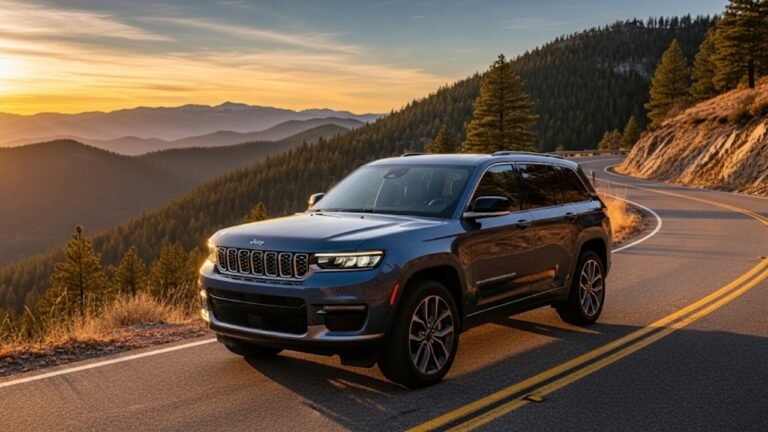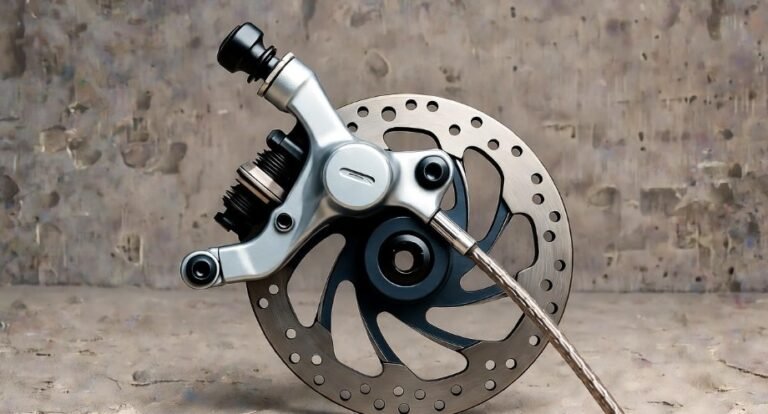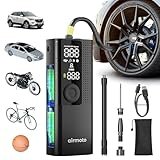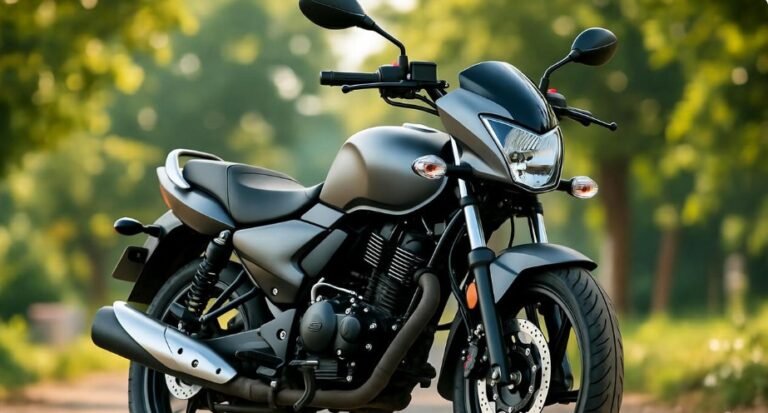What Does Auto Hold Mean on a Hyundai: Explained and Demystified

If you’ve ever found yourself stuck at a long red light or inching forward in bumper-to-bumper traffic, you know how tiring it can be to keep your foot pressed on the brake. That’s where Hyundai’s Auto Hold feature steps in — like a trusted co-pilot quietly taking over one of your smallest yet most repetitive tasks. The Auto Hold function automatically keeps your vehicle stationary without you having to hold the brake pedal.
In simple words, imagine this: you stop at a traffic light, press the brake, and once Auto Hold engages, you can lift your foot off the pedal — your car won’t move until you press the accelerator again. It’s one of those small luxuries that makes a huge difference in everyday driving comfort.
In this guide, we’ll break down exactly what Auto Hold means on a Hyundai, how it works, when to use it, and why it’s becoming one of the most loved features among Hyundai drivers. Whether you drive a Tucson, Sonata, or Santa Fe, understanding this feature can make your driving smoother, safer, and surprisingly more relaxing.
Understanding What Auto Hold Means on a Hyundai

Let’s start from the basics. Auto Hold on a Hyundai is a system that keeps your car stationary after you’ve brought it to a stop — even if you take your foot off the brake pedal. It’s part of Hyundai’s Electronic Parking Brake (EPB) system and is designed to offer both comfort and safety.
The system uses sensors to detect when the car is completely still. Once detected, the brakes stay engaged until you accelerate again. This means your car won’t roll forward or backward — whether you’re on a flat road, a steep incline, or crawling through city traffic.
You’ll typically activate the feature through a dedicated Auto Hold button located near the gear selector. When active, a small indicator light on the dashboard confirms that the system is engaged. From that moment on, your Hyundai handles the stationary part for you — all you have to do is enjoy a stress-free drive.
To sum it up in plain terms:
-
Press the brake to stop the car.
-
Auto Hold activates and keeps the car still.
-
You release the brake pedal.
-
Press the accelerator when ready to move again.
That’s it — no constant braking, no rolling, no tension.
How Auto Hold Works: The Science Behind the Simplicity
Although it feels effortless, there’s smart engineering behind the Auto Hold feature. Hyundai designed it to work in harmony with the car’s braking and stability control systems. Here’s a quick look at what happens behind the scenes:
-
You come to a stop: The car’s sensors detect zero motion.
-
Brake pressure holds: The system maintains hydraulic pressure on the brakes automatically.
-
Indicator confirms: The Auto Hold light on your dashboard turns green, confirming the system is active.
-
You release the brake: The car remains completely still.
-
You accelerate: The system smoothly releases the brakes, allowing forward movement without a jolt.
This intelligent coordination not only adds comfort but also prevents rollback on hills — a situation that can be stressful for newer drivers. Think of it like having an invisible foot keeping your car steady until you’re ready to move again.
Why Hyundai Added Auto Hold: Designed for Real-Life Driving
Hyundai didn’t add Auto Hold just for the sake of technology. It was built to solve a very real problem — driver fatigue in stop-and-go conditions.
Picture driving through city traffic after a long day. Your foot is constantly moving — brake, gas, brake, gas. Over time, this repetitive action becomes exhausting. Auto Hold eliminates that small but draining effort by letting your foot rest while keeping the car still.
Here’s why Hyundai drivers appreciate this feature:
-
It reduces foot strain during long commutes.
-
It prevents accidental rolling on slopes.
-
It adds convenience when waiting at red lights.
-
It improves control in unpredictable traffic situations.
In short, Auto Hold gives you a smoother, more composed driving rhythm. You’re less tense, more alert, and far more comfortable.
Activating Auto Hold on a Hyundai: A Simple Step-by-Step
If you’ve never used Auto Hold before, you’ll be surprised at how easy it is to activate. Hyundai designed the system to be intuitive, requiring just a few steps:
-
Start your car and fasten your seatbelt.
-
Press the Auto Hold button, usually located near the electronic parking brake switch.
-
A white “Auto Hold” indicator appears on the dashboard, confirming the system is on standby.
-
When you press the brake pedal to stop the car, the light turns green, meaning the system is active.
-
You can now release the brake — the car will stay still until you press the accelerator.
To deactivate Auto Hold, simply press the Auto Hold button again.
Pro tip: Some Hyundai models remember your Auto Hold preference. That means even after restarting your car, the feature stays on until you manually switch it off — a thoughtful touch for everyday convenience.
When to Use Auto Hold: Everyday Scenarios That Make Sense
Auto Hold isn’t something you’ll use every moment, but it shines in specific driving situations. Here’s when it’s most beneficial:
-
In heavy traffic: Perfect for those endless traffic jams. No need to keep pressing and releasing the brake.
-
At traffic lights: Keeps your car steady while you relax for a few seconds.
-
On slopes or hills: Prevents rolling backward when you release the brake pedal.
-
In parking lots: Makes maneuvering and waiting smoother without constant braking.
Basically, any time your car stops temporarily, Auto Hold steps in as your silent helper. Once you start using it, you’ll wonder how you ever drove without it.
Auto Hold vs. Traditional Parking Brake: What’s the Difference?
At first glance, Auto Hold may sound like the parking brake — but they serve slightly different purposes.
| Feature | Auto Hold | Parking Brake |
|---|---|---|
| Purpose | Keeps the car stationary temporarily | Secures the car when parked |
| Activation | Press the Auto Hold button while driving | Pull or press the parking brake when stopped |
| Duration | Active until acceleration | Active until manually released |
| Best For | Traffic stops, lights, slopes | Parking or long-term stops |
Think of Auto Hold as your “short stop” assistant, while the parking brake is your “long stop” safety system. Both complement each other and work together in Hyundai’s braking technology.
The Benefits of Using Auto Hold in Your Hyundai
The true beauty of Auto Hold lies in how it transforms your driving experience without requiring extra effort. Here are some key benefits every Hyundai owner should know:
-
Less fatigue in traffic: You don’t have to keep your foot on the brake pedal for minutes at a time.
-
Improved safety: Prevents your car from rolling forward or backward unexpectedly.
-
Smoother starts: Reduces jerks when moving off from a stop.
-
Enhanced comfort: Allows you to relax your leg during long drives.
-
Better control: Keeps the car steady during momentary stops, especially on uneven roads.
In a world where comfort and safety go hand-in-hand, Auto Hold is one of those features that makes every drive a little more effortless.
Common Misconceptions About Auto Hold
Like many modern car technologies, Auto Hold is sometimes misunderstood. Let’s clear up a few common myths:
-
Myth 1: “Auto Hold replaces the parking brake.”
Not true. It’s meant for short-term stops, not long-term parking. -
Myth 2: “It consumes extra battery or fuel.”
False. The system uses minimal power and has no impact on fuel efficiency. -
Myth 3: “It’s only useful on hills.”
Incorrect. It’s just as helpful in city traffic as it is on inclines. -
Myth 4: “You must deactivate it before turning off the car.”
No. Most Hyundai models automatically switch to the parking brake when the engine is turned off.
By understanding how Auto Hold actually works, you’ll be more confident using it daily without worry or confusion.
Safety Aspects of Auto Hold: More Than Just Convenience
When you think of Auto Hold, comfort may be the first thing that comes to mind — but its impact on safety is just as significant. Hyundai engineers designed this feature to add a layer of protection during situations when human reaction might lag slightly. For example, when you’re distracted by something on your dashboard or a phone notification, Auto Hold ensures your vehicle doesn’t inch forward or roll back unintentionally.
It’s particularly useful on steep inclines, where a split second of rollback could lead to minor collisions or panic. The system instantly holds the brake pressure even after you lift your foot, preventing your car from sliding. This feature is especially appreciated by new drivers who are still mastering hill starts.
In addition, Hyundai’s Auto Hold system works hand-in-hand with Electronic Stability Control (ESC) and the Anti-lock Braking System (ABS), ensuring that every stop is stable and consistent. So even though it feels like a small convenience feature, it plays a major role in keeping your driving safer, calmer, and more controlled.
When Not to Use Auto Hold: Knowing Its Limits
While Auto Hold is a fantastic tool, there are certain situations where it might not be ideal to rely on it. Knowing when to avoid using this system can help prevent unexpected behavior and ensure smoother operation.
Here are a few cases where turning off Auto Hold may be wise:
-
Off-road or rough terrains: On uneven surfaces, Auto Hold might engage too abruptly, affecting momentum.
-
During towing: If you’re pulling a trailer or another vehicle, the feature could interfere with natural brake control.
-
In car washes: Since many automatic car washes require the vehicle to roll forward smoothly, Auto Hold can create resistance.
-
Extreme cold conditions: In rare cases, moisture around brake components can freeze, making it better to use manual brake control.
Auto Hold is designed for urban driving and daily commutes, not for extreme or off-road scenarios. By understanding its limits, you can use it smartly without compromising control.
Maintenance Tips: Keeping Auto Hold in Perfect Condition
The good news? The Auto Hold system doesn’t require special maintenance. However, since it depends on your braking system, keeping that in top shape ensures smooth performance. Here are some simple tips to help:
-
Check brake fluid levels regularly — low fluid can affect Auto Hold responsiveness.
-
Service the brake system at recommended intervals to avoid uneven brake pressure.
-
Keep sensors clean, especially around wheels and ABS components, to ensure accurate readings.
-
Update your software when Hyundai releases new system patches; these updates sometimes improve Auto Hold performance.
It’s also important to test the feature periodically. When stopping at a safe location, activate Auto Hold and ensure the car remains stationary. A quick check like this reassures you that everything is functioning properly.
Hyundai Models Equipped with Auto Hold
If you’re wondering whether your Hyundai has this feature, the answer depends on the model and trim. Most modern Hyundai vehicles come with Auto Hold as part of the Electronic Parking Brake (EPB) package.
Here’s a quick overview of popular Hyundai models where Auto Hold is available:
| Hyundai Model | Availability of Auto Hold | Feature Integration |
|---|---|---|
| Hyundai Tucson | Standard on mid and higher trims | Integrated with EPB |
| Hyundai Santa Fe | Standard on most trims | Works with driver-assist suite |
| Hyundai Elantra | Available on SEL and higher trims | Dashboard activation |
| Hyundai Sonata | Standard on Limited trim | Paired with Smart Cruise Control |
| Hyundai Palisade | Standard | Auto re-engages after restart |
| Hyundai Kona | Optional | Comes with electronic brake system |
As Hyundai continues to innovate, Auto Hold is becoming a default feature in many new releases — signaling the brand’s commitment to blending comfort, safety, and simplicity.
Real-Life Experiences: Drivers Who Love Auto Hold
Drivers often describe Auto Hold as one of those features they didn’t know they needed until they used it. A commuter in Atlanta shared that Auto Hold “completely changed the way I deal with rush-hour traffic — my foot finally gets a break!” Another Hyundai owner in Seattle mentioned how it helps during steep hill stops downtown: “It’s a small thing, but it takes away so much stress.”
The best part? Once you’ve experienced it, you naturally expect it in every vehicle you drive afterward. The feature creates a sense of effortless control — no awkward rolling, no constant footwork. Hyundai owners say it’s one of those “invisible features” that makes driving feel smoother, more premium, and perfectly intuitive.
So, if you’re test-driving a Hyundai, make sure to press that Auto Hold button — you’ll immediately understand why so many drivers swear by it.
Auto Hold and Hyundai’s Safety Ecosystem
Auto Hold doesn’t stand alone; it’s part of a larger Hyundai SmartSense ecosystem that enhances overall driving safety. This system integrates lane-keeping assist, adaptive cruise control, blind-spot monitoring, and automatic emergency braking — all designed to reduce driver workload and enhance comfort.
When combined, these technologies create a seamless driving experience. For example, if you’re using adaptive cruise control in traffic, Auto Hold automatically keeps your car stationary when the vehicle ahead stops. Once traffic starts moving again, the system gently accelerates. This blend of automation and control creates a relaxed, hands-on feel where technology supports, not replaces, the driver.
Hyundai’s vision for the future of driving revolves around stress-free control, and Auto Hold fits perfectly into that philosophy — subtle yet transformative.
Troubleshooting Auto Hold Issues
Like any advanced feature, Auto Hold may occasionally behave unexpectedly. Common issues usually stem from user error or simple maintenance neglect. Here’s how to identify and fix small problems:
-
Auto Hold not engaging: Make sure your seatbelt is fastened and the driver’s door is fully closed; most Hyundai models require these conditions.
-
Indicator light flashing: This could signal low brake fluid or an issue with the ABS sensor. Check fluid levels first.
-
Car rolling slightly before holding: Sometimes, this occurs on steep hills. Lightly press the brake again to reinforce the system.
-
System not reactivating after restart: Check your settings menu; some models require you to manually enable Auto Hold each time.
If the warning persists, it’s best to have your Hyundai dealer run a system diagnostic test. The fix is often simple and ensures safe, reliable operation.
Key Takeaways: Why Auto Hold Matters
By now, it’s clear that Auto Hold is more than just a fancy button. It’s a feature that quietly transforms your driving rhythm, providing comfort, safety, and convenience — especially in modern traffic conditions.
Here’s a quick recap of what makes it so valuable:
-
Keeps your car steady without brake pressure.
-
Reduces driver fatigue and foot strain.
-
Works seamlessly with Hyundai’s safety systems.
-
Prevents rollbacks on inclines.
-
Enhances control in stop-and-go traffic.
Simply put, Auto Hold adds a layer of intelligence to everyday driving — the kind of subtle innovation that makes Hyundai vehicles feel naturally advanced.
Frequently Asked Questions (FAQs)
1. What does Auto Hold mean on a Hyundai?
Auto Hold is a system that automatically keeps your Hyundai stationary after stopping, without needing to keep your foot on the brake pedal.
2. How do I activate Auto Hold in my Hyundai?
Press the Auto Hold button (usually near the parking brake) and watch for the indicator light. Once it turns green, the system is active.
3. Does Auto Hold work on hills?
Yes, it’s designed to prevent your vehicle from rolling backward or forward on slopes.
4. Will Auto Hold drain my battery?
No. It uses minimal electrical power and has no noticeable impact on battery life or fuel economy.
5. Can I turn Auto Hold off if I don’t want to use it?
Absolutely. You can press the Auto Hold button again to deactivate it at any time.
6. Is Auto Hold available in all Hyundai models?
Most new Hyundai models — including Tucson, Santa Fe, and Palisade — come with Auto Hold as a standard or optional feature.
7. Does Auto Hold work with cruise control?
Yes. When combined with adaptive cruise control, Auto Hold helps manage braking automatically during traffic stops.
8. What should I do if Auto Hold stops working?
First, check your seatbelt and brake fluid. If the issue continues, visit your Hyundai service center for a quick inspection.
Conclusion: A Small Feature That Makes a Big Difference
In the grand scheme of automotive technology, Auto Hold might seem minor — but anyone who’s used it knows how transformative it can be. It’s the perfect example of Hyundai’s design philosophy: small innovations that make everyday driving smarter and easier.
By eliminating the constant brake-and-hold routine, Auto Hold lets you focus on the road ahead with less fatigue and more confidence. Whether you’re navigating city traffic, stopping at a red light, or waiting on a hill, your Hyundai silently supports you — making each journey smoother and more effortless.
So next time you sit behind the wheel of your Hyundai, press that Auto Hold button and experience the quiet luxury of intelligent control.





